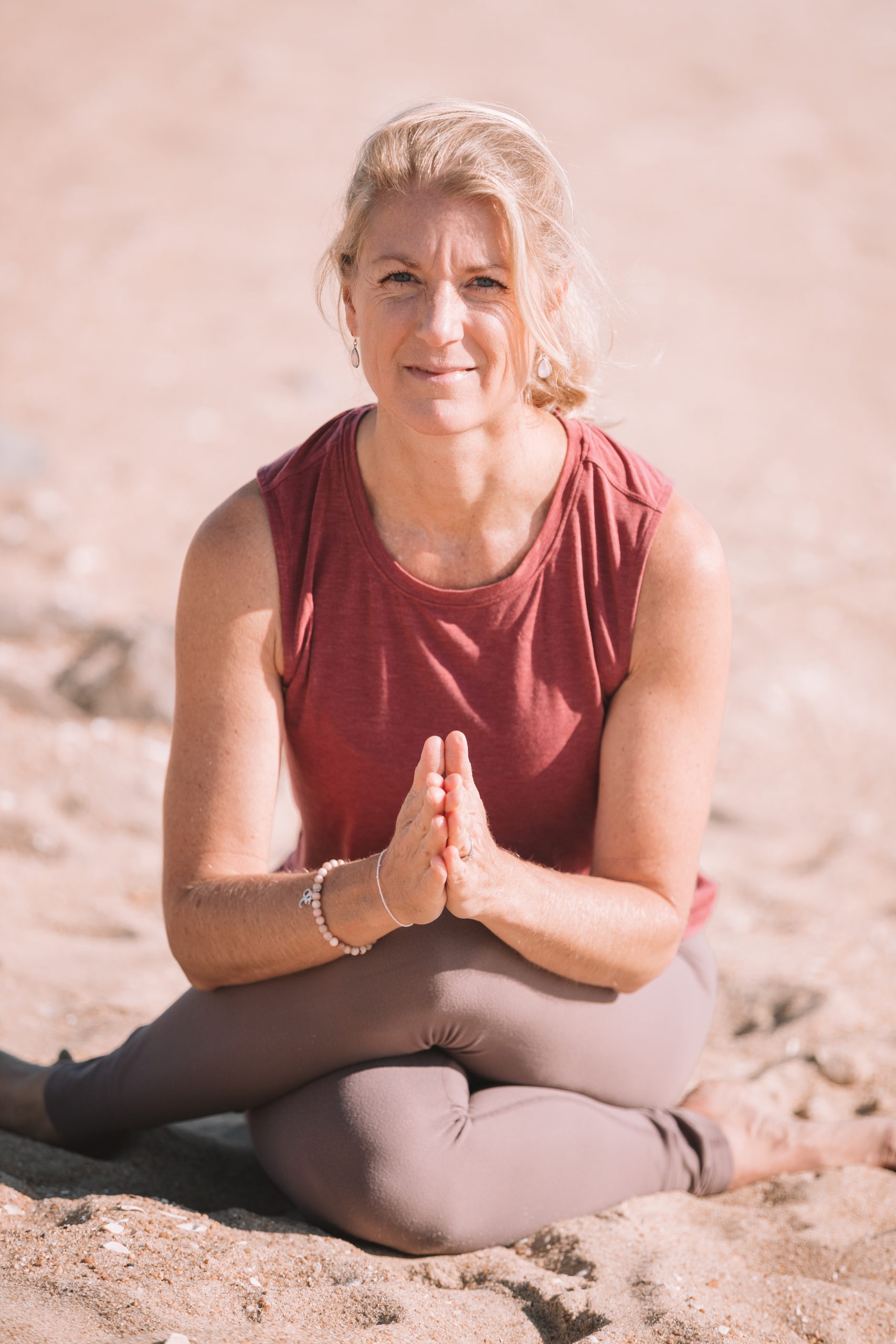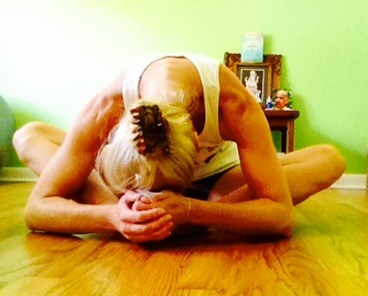
27 Aug Yin Yoga and its benefits
In this day and age, yoga seems to be a practice that is all about the ability to get into the most complicated postures and to get a workout in, under the pretense that we are being ‘spiritual’ and are taking care of ourselves. I’m not saying that this isn’t so. I know deeply spiritual people that practice the Ashtanga Primary Series every day. Yet, this is not the way to practice that benefits everyone and every body. If you are irritable, easily hot and your predominant emotion is anger, a dynamic heat building practice may bring you even more out of balance. If you feel depleted, without vitality and experience stiffness in your body, a quieter practice is exactly what you need. Thank the Universe there is Yin Yoga!
Yin Yoga is a yoga practice that allows us to reach the deeper layers of the body beyond the muscles: the connective tissue. By emphasizing gentle pressure, compression and pulling on the connective tissue (or: fascia), we can increase circulation of synovial fluid in the joints and improve flexibility , which enhances our ability to move – and sit still! – more easily and gracefully. This form of yoga is practiced by holding seated and supine postures for 3 – 5 minutes. Yin Yoga poses don’t require balance or muscular effort, so virtually anyone can practice it.
The practice of Yin Yoga has many benefits, not only on a physical but also on an emotional and mental level. The practice has a direct positive effect on the health of our organs, as each pose stimulates the flow of Chi (or: Life Force) through the respective meridians, resulting in increased vitality. By holding the Yin Yoga poses for several minutes, we have ample time to practice specific breathing patterns (Pranayama). Pranayama enhances our breath awareness, soothes the nervous system, and so relaxes the body and calms the mind. The stimulation of the meridians while we practice Yin Yoga also regulates our emotions. The practice can teach us how to host our emotions without attaching to them. By holding Sleeping Swan pose (Pigeon pose, in Yang yoga) for 5 minutes, for example, we may experience feelings of rage or irritation, as this pose stimulates the liver meridian that is connected with the emotion of anger. Yet, when we simply allow these feelings to be there, without attaching a story or trying to make them go away, we can learn to be with what arises before us without reacting to it.
We aim at being still in each Yin Yoga pose. Thus, Yin Yoga is a great doorway into meditation, and is particularly suited to the practice of Mindfulness meditation. This method of meditation leads to more mental clarity, and to an insight into our inner and outer world without judging. This stillness during our practice enhances our productivity once we step off the mat.
In summary, by doing less – to be quiet in our postures for 3 – 5 minutes each -, we actually achieve more. Better health and a quiet mind will go a long way. Doesn’t that sound like a great way to practice?
If you’d like to practice Yin Yoga at home, here is a posture for overall health and vitality that you may like to try. I highly recommend practicing Butterfly Pose everyday.
Butterfly Pose

Benefits*:
The meridians that are affected by this pose are: the Kidney, Urinary Bladder, Liver, Gall Bladder, Spleen and Stomach meridians. The Kidney, Liver and Spleen meridians run through the inside of the legs, The Urinary Bladder runs through the lower back, the Liver and Spleen meridians run through the groin, the Gallbladder meridian runs through the outer hips, and the Stomach meridian runs through the front of the torso. (If practiced lying down, the Stomach and Urinary Bladder meridians will not be affected.)
Precautions:
If you have, or have had, a knee, groin or hip injury or sensitivity, place a block, cushion or blanket under your knees to support the upper thighs, and reduce the stretch of the groin and the widening of the knees.
If you have issues with your SI-joint, sciatica or a disc injury, lay down on your back with your knees bent and practice the pose lying down to take the pressure of your lower back.
If you have an upper back injury or sensitivity that isn’t acute, you can practice Butterfly Pose seated but don’t round the spine. Instead, don’t come down so far but keep the spine straight and reach your arms behind you while pressing your fingertips gently into the floor, to help lengthen the spine, reach the crown of the head away from your tailbone, and get some reflexology on the meridians that run through your fingertips (Lung, Heart, Small and Large Intestine meridians). Do this also if you have any respiratory issues that prevent you from breathing deeply, as the rounding of the spine will make it even more difficult to breathe deeply.
If you have any neck injury or sensitivity, keep the neck long instead of letting the head drop. You can let your chin rest in your hands or stack your fists on your feet and let your forehead rest on your fists.
If your ankles are sensitive, you can place a thin cushion or a blanket under your feet.
How:
Seated on your mat, bring your feet out in front of you, knees bent and to the sides, and the soles of the feet touching. The feet are away from, rather than close to, the groin, so that your legs make a diamond shape. Inhale, and as you exhale round your spine forward, allowing your head to come down towards your feet. Don’t force yourself into your deepest forward bend. Just let gravity pull you gently downward as the minutes pass.
After 3-5 minutes:
To come out of the pose, inhale and slowly come back to a straight spine, if you were in the seated pose. Place your hands under your knees to help your knees back together. Hug your knees into your chest with your arms and stay there for a few breaths. Then lie down on your back with straight legs, if you’re not already there, to notice the effects of Butterfly Pose.
Namaste,
Marije E. Paternotte
* This practice is not intended to diagnose or treat any symptoms or disease. If you have any health issues, please consult a physician.